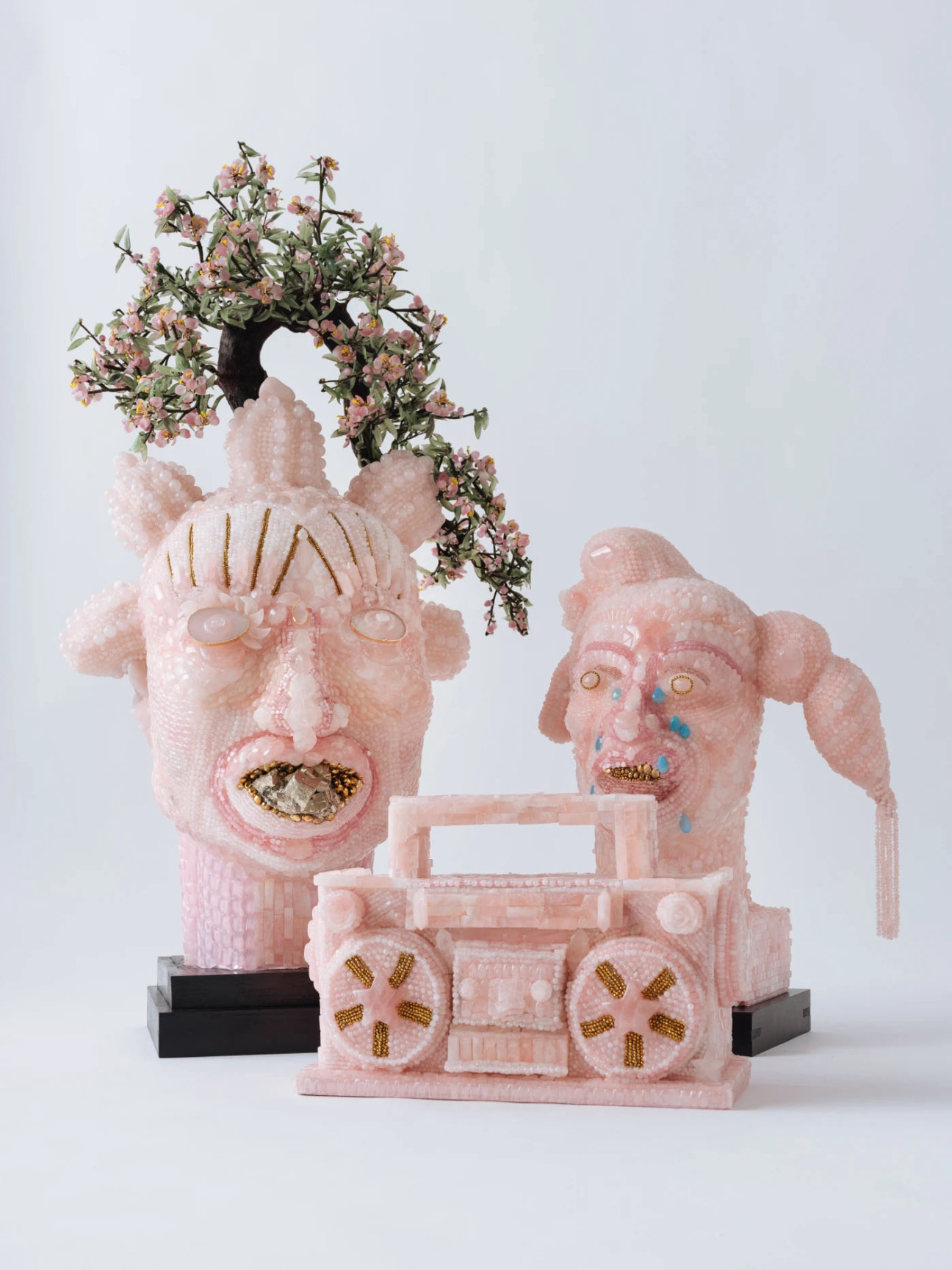
How’s the art market doing right now? That is the question—amid a contraction from the buying frenzy of recent years, reported fears of shuttering, and an abundance of flowery landscape and still life. On Thursday, Frieze LA opened the doors to VIP previews with 95 exhibitors, down from more than 120 the year before, and gallerists described a noticeable change in collectors’ buying habits. The purchases were widely characterized by dealers as "slower and more selective.” But before diving into the details, let’s get the celebrity sightings out of the way.
On day one inside the tent at Santa Monica airport, Anat Ebgi Partner and Senior Director Stefano di Paola spotted Will Ferrell and Robert Downey Jr. early on. “I feel like Frieze LA always promises you A-list celebrities,” he told CULTURED. Before the official 11 a.m. opening, Olney said he spotted Rob Lowe and wondered what he might be searching for.
As for sales, gallerists noted an uptick in holds rather than confirmations leading into the fair, as regrettable purchases made via PDF during the pandemic motivated more collectors to see works in person before buying. In previous years, “the market was just running on a lot more heat than quality,” said New York advisor Ralph DeLuca, but the fast fashion of trend chasing seems to be dying down. “I think it's more about buying value than just buying something that everyone wants.”

Kasmin sold 10 sculptures by vanessa german, who premiered a new body of busts adorned with jewel-like rose quartz. Pace’s top reported sales were a $700,000 charcoal work on paper by Robert Longo followed by a $450,000 Split Orb painting by Loie Hollowell, arguably the top of the transcendental-by-way-of-Hilma af Klint landscape trend. Lehmann Maupin sold 15 works including painting and sculpture by Korean artist Kim Yun Shin, newly added to their roster in January and slated to have work in the next Venice Biennale.
Advisor Jessica Arb Danial, who represents clients in New York, Miami, and Dallas, said she was pleasantly surprised by Frieze’s offerings. “Overall, the fair felt fresh and diverse” compared to the redundancy of Art Basel Miami Beach, she said, where previews featured unsold works she had already seen elsewhere. In this more “selective” climate, she added, “I noticed the booths had more staff to answer questions and they were more heads up, less heads down.” One of her clients purchased a piece by photographer Widline Cadet from Nazarian Curcio, and was on the waitlist for a work elsewhere.
Emilia Yin of LA gallery Make Room described this moment as “more fun,” noting one collector who repeatedly returned to the booth to discuss a piece with different groups of people before buying. “When the market is very overheated, you don't get as much time to have these conversations.”

In Focus, a section devoted to emerging artists, she presented conceptual, multi-tiered sculptures by Mexico City-based artist Yeni Mao, and was pleased about the fair’s efforts to bring institutions like The Met and Tate to her booth. As a returning Focus exhibitor, she was also happy to be under the same tent—last year the fair had separated Focus into a tent a golf cart’s ride away, to the dismay of exhibitors and fairgoers alike. For this edition, she added, “The fair is really making an effort to be productive for everyone.”
Yin did note fewer collectors from Mainland China for a number of reasons, including the return of Art Basel Hong Kong to its pre-pandemic scale diverting collectors’ attention. Fellow Focus exhibitor and San Francisco gallerist Micki Meng also noted that “Asia now is in somewhat of a recession, where the two largest luxury real estate firms in China went bankrupt last summer,” but disagrees that fewer Asian collectors are coming. “We’re seeing a spike in collectors from Indonesia,” she added, “and now it’s just building a steady base.”
Despite the slower pace, New York gallerist David Lewis described first day engagement as “extremely high and broad and good.” Considering the LA’s close-knit artist community, his mixed presentation of historic and newer works included LA artists Todd Gray and Barbara Bloom. As usual, “If you have very hot young artists, you expect it to sell on opening day,” he said, as works by Trey Abdella and Leah Ke Yi Zheng had already sold, but with historic works like his 1985 Bruce Nauman neon piece Double Poke in the Eye II or 1998 John Boskovich lightbox, “You expect it to take longer.” And when asked if he had spoken to any institutions, he replied, “Does Leonardo DiCaprio count?”










 in your life?
in your life?

